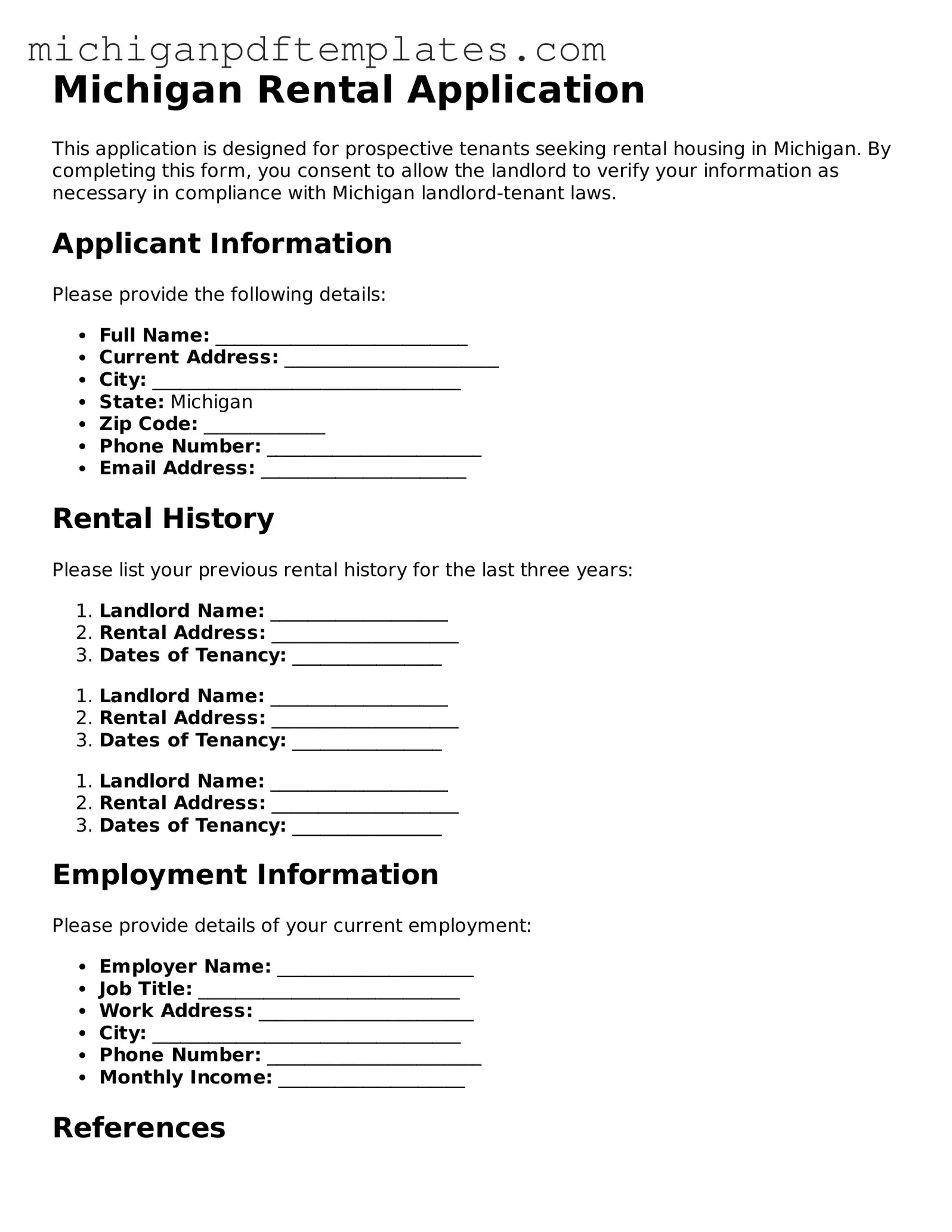Legal Michigan Rental Application Template
The Michigan Rental Application form is a document used by landlords to collect essential information from prospective tenants. This form typically includes details such as personal identification, rental history, and employment verification. Completing the application accurately is crucial for both landlords and tenants to ensure a smooth rental process.
Ready to get started? Fill out the Michigan Rental Application form by clicking the button below.
Get Your Form Now
